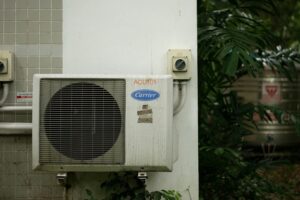Nowadays, air conditioning is an absolute necessity in many parts of the world. Without it, hot climates would be unbearable. But what exactly goes into cooling our homes? In this post, we will explore the science behind air conditioning and show you how modern technology helps us cool our homes and purify indoor air.
1. Heating, Ventilating, And Air Conditioning (HVAC)
This comprehensive system is made up of several key components that ensure the proper flow of air inside buildings. HVAC units include an evaporator coil for cooling and a condenser coil for heat transfer. An outdoor compressor pumps refrigerant through copper pipes which allow cooled or heated air to be circulated inside the building.
Regular maintenance of your air conditioning system is important in order to ensure it is running as efficiently as possible. This includes changing air filters, checking refrigerant levels, and ensuring all components are working properly. If you need professional help with any of these AC services, an experienced technician can provide expert advice on how to best maintain and repair the system for optimal performance.
2. Air Filters
Air filters are an essential part of any air conditioning system, as they help to trap particles like dust, pollen and other contaminants in order to purify indoor air quality. It is important to regularly change or clean these filters in order to maintain the effectiveness of the system, as they can become clogged over time with dirt and debris which hinders their performance.
Changing these filters on a regular basis helps promote better air quality while also making sure the system runs efficiently. By taking this extra step, you can ensure your air conditioning system works at its optimal level for years to come.
3. Thermostat
The thermostat is a key component of an air conditioning system as it helps regulate the temperature levels inside a building by turning the system on and off when needed. It also allows users to customize their desired temperature, either via manual or programmable settings.
4. Humidifiers
Humidifiers are used in air conditioning systems to adjust humidity levels in order to prevent dryness and maintain a comfortable environment. This is especially important in hot and humid climates where the air tends to be more damp.
5. Air Purifiers
Air purifiers use filters, activated carbon or ultraviolet light to remove contaminants from indoor air, such as bacteria, mold spores, dust mites and volatile organic compounds (VOCs).
These systems are often seen as beneficial for people with allergies or asthma as they can help reduce symptoms by removing irritants from the air.
6. Refrigerants
Refrigerants are the key component in air conditioning systems used to transfer heat. They are used to cool down the air so it can be circulated indoors, by absorbing and releasing heat as they pass through a series of coils.
7. Insulation
Proper insulation is necessary for maintaining comfortable temperatures inside buildings, especially during extreme weather changes.
It helps reduce energy costs and keeps conditioned air from escaping outside, while also preventing outdoor hot or cold temperatures from entering the building.
8. Zoning Systems
Zoning systems divide a single HVAC system into multiple areas which can be individually controlled with thermostats, allowing different rooms to have different temperature settings based on user preference. This also helps to reduce energy costs by only cooling or heating areas that are being used.
In Conclusion
Air conditioning systems are an effective way to maintain comfortable temperatures at home or in the office. From HVAC units to thermostats and humidifiers, modern technology has come a long way to make these systems more efficient than ever before. It is important to regularly maintain your system by changing filters and other components as needed, not only for optimal performance but also to ensure you benefit from clean and pure indoor air quality.
Fuente: https://techbuzzireland.com






